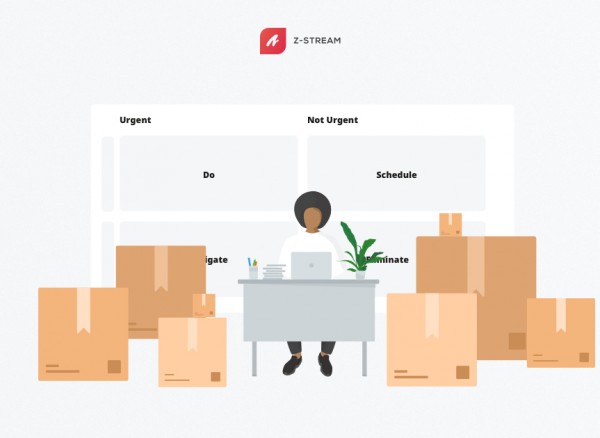
Competitive markets constantly encourage the development of new products and services, many of which are built to make businesses more efficient. Creating something that has never been built before, however, comes with a great deal of risk. What if there is no market for the product or service you are offering? What if your business won’t be sustainable or the return on investment is relatively low?
To avoid potentially devastating outcomes, entrepreneurs, investors, and project managers use various risk assessment models. Models are crucial for visualizing threats and communicating risk management and mitigation strategies to teams or to whole organizations. Let’s examine the risk assessment matrix approach and how it can increase confidence during the decision-making process.
Risk assessment vs risk analysis
Risk assessment and risk analysis are the two primary processes in managing risks. What’s the difference between risk assessment and risk analysis
Risk assessment involves identifying all threats a project can face – external and internal alike. At this stage of risk management, a project manager shouldn’t group threats by likelihood, but should instead list all possible risks.

During risk analysis, on the other hand, project managers revisit the risks defined during risk assessment to analyze how much damage a given risk could cause and prioritize all risks by likelihood and impact. Thus, risk analysis operates based on two dominant variables – probability and impact.
How to use a risk assessment matrix in project management?
A risk assessment matrix is a way for project managers to get a big-picture view of how dangerous a given risk is. By uniting probability and impact in one place, matrices make risk evaluation a breeze. Based on the probability and the impact of a threat, a general ‘risk value’ is calculated.
Here’s a video tutorial on how to create a risk assessment matrix:
To create an efficient risk assessment matrix, follow the steps below:
Identifying risks in project management
Learning how to identify real risks that can negatively impact or derail the project is the first step in creating a risk assessment matrix. Don’t hold back – include all possible issues, even if some are not as likely as others.
To facilitate the process of identifying threats, use these questions as pointers:
- What can damage the ecosystem of a project?
- Are there any data-related threats?
- Can employees tamper with the system?
- What reputational and financial losses can the organization sustain and why?
- Can external factors – earthquakes, fires, and others, get in the way of the project’s sustainability and performance?
How to place risks in the matrix?
There are several ways to measure the impact and probability of a threat. There are teams who use a percentage system to rank risks. Others group threats by categories, such as:

- Almost certain – these threats are extremely likely to come to life. If likely risks have a high impact, mitigating them should be the team’s first priority.
- Likely – although not definite, likely risks are more plausible to occur than not to.
- Possible – there’s a 50/50 chance of this type of risk materializing.
- Unlikely – unlikely to occur – but it could reasonably happen.
- Rare – these threats are rarely relevant.
To rank the impact of a potential threat, project managers usually use the following categories:
- Insignificant – the threat can cause no irreversible damage and any negative consequences are easy to fix
- Minor – threats that require pre-planned preventive measures but can be handled with no financial losses and don’t lead to lasting adverse effects
- Moderate – these risks can halt work or cause workplace inconvenience – however, the team has clear frameworks to mitigate the damage
- Major – the damage will be expensive to fix and will require a significant amount of time until the project operates properly
- Severe – high-priority risks that put the entire project and system in jeopardy and are likely to put user data and security in jeopardy. Dealing with these threats will require major product changes and innovative solutions.
Placing threats on a risk assessment matrix makes them really easy to contextualize and subsequently mitigate. You can color the cells containing the most pressing risks red, the cells containing moderate-risk items yellow, and the cells containing inconsequential or unlikely risk-events green to give the team a clear visual representation of the most urgent risks that need to be addressed.
What does each risk in the assessment matrix mean?
Placing risks inside the risk assessment matrix gives project managers a better idea of the severity of each threat. After seeing which threats are high-priority and which are not as relevant, group all of them by categories:
- Extremely risky (often highlighted in red) These project risks are the most damaging and the likeliest ones to occur. They can make or break the project – that’s why managers have to mitigate these threats immediately.
- High-risk (often orange) Though these are not the organization’s most critical threats, they are still damaging in their own right. Dealing with the consequences of these types of threats is expensive and time-consuming.
- Medium-risk (often yellow) Although there’s no need to act immediately when it comes to mitigating medium-risk threats, it’s essential to prepare a strategy for mitigating them in case they materialize.
- Low-risk (often green). These risks can be ignored since dealing with them can make the project harder or more expensive to maintain. However, when a team is looking for ways to improve efficiency, dealing with low-priority risks is a good place to start.
Advantages of a risk matrix for risk assessment
Creating a risk assessment matrix affords project managers numerous benefits:
- Effective instant prioritization. The tool uses a simple visual system that helps identify the most urgent, high-priority hazards to focus on.
- Broad application. The matrix can be used to assess any risk your company may face, be it a technical, workplace-related, or monetary one.
- Comprehensibility. The matrix is a clear and concise way to present data visually to the team on the possible risks that may have to be managed in the future.
Conclusion
Risk assessment matrices are an efficient, easy-to-use project management tool that helps protect the development process, increase the team’s confidence in the venture’s success, and allow you to minimize the impact of potential threats. They help business owners prioritize risks and develop efficient contingency strategies while keeping the broader context of risks in sight. Go ahead and try to create one to protect your initiatives from the most damaging threats or risks involved.



